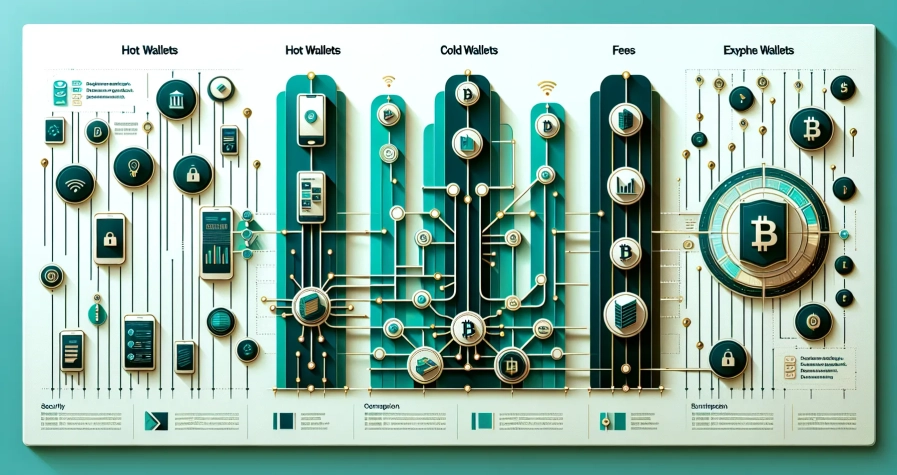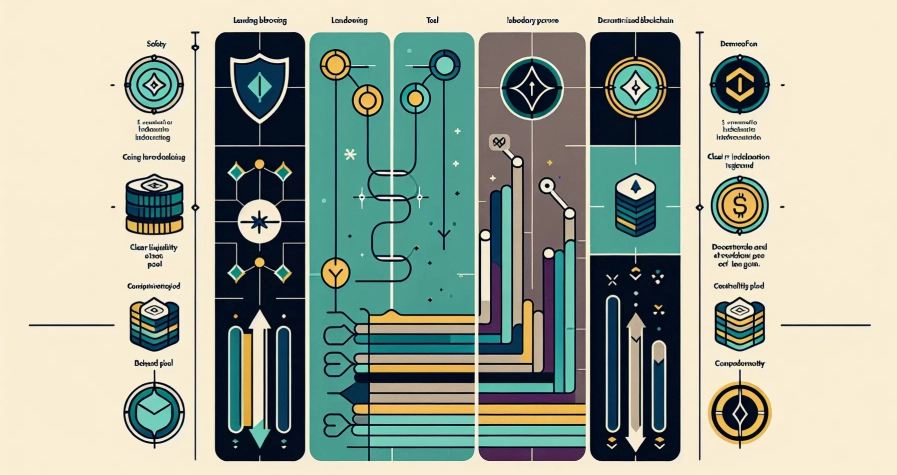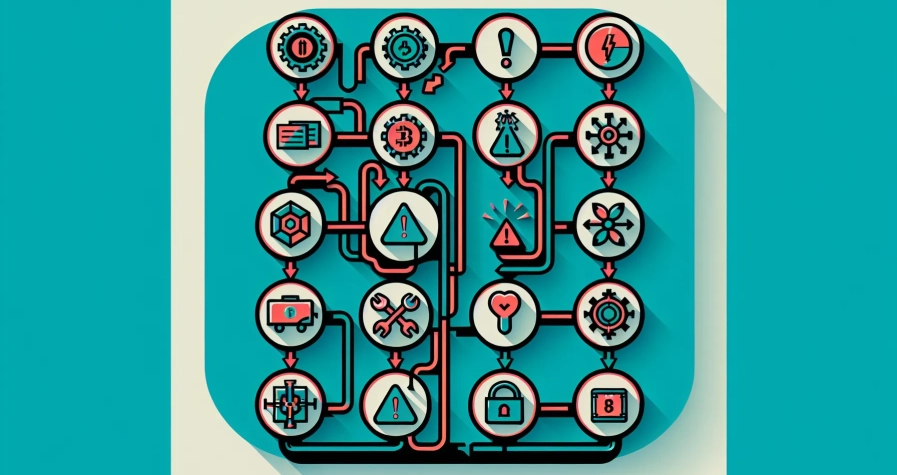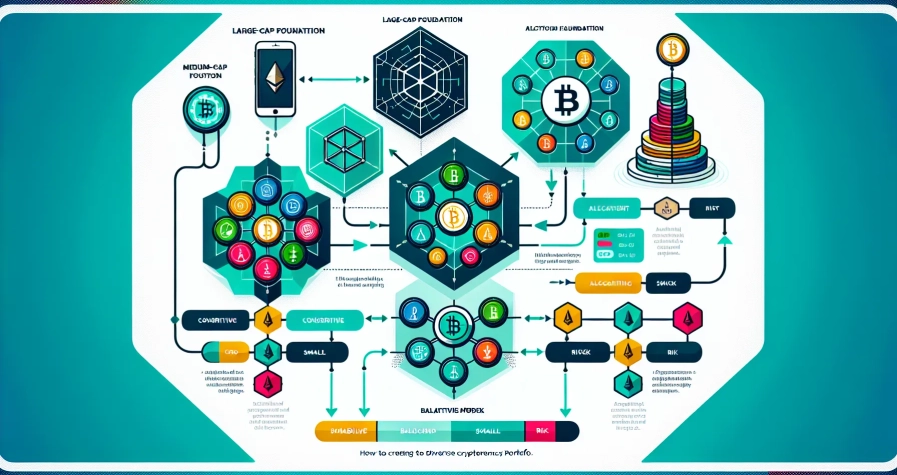Stepping into the world of cryptocurrency can feel like opening a door to an entirely new financial landscape. But before anyone can start buying, trading, or holding digital assets, there’s one essential decision to make: choosing the right crypto wallet. Unlike traditional bank accounts, crypto wallets don’t actually store your coins, they store the private keys that give you access to them on the blockchain. This makes selecting a secure, reliable wallet a critical first step for any beginner.
With dozens of wallet options available, each boasting different features, security levels, and usability, the choice can quickly become overwhelming. Should a newcomer opt for the convenience of a hot wallet or the robust security of a cold wallet? Is it better to trust a third party with custody, or take full control of one’s private keys? Understanding these distinctions, and knowing what features matter most, can make all the difference between a smooth crypto journey and a costly mistake.
This beginner’s checklist breaks down the key factors to consider when choosing a first crypto wallet, from wallet types and security features to fees, compatibility, and reputation. By the end, readers will have a clear framework for making an well-informed choice that aligns with their needs, risk tolerance, and long-term goals.
Key Takeaways
- Choosing the right crypto wallet is a critical first step, as wallets store the private keys that grant access to your digital assets on the blockchain.
- Hot wallets offer convenient internet connectivity for frequent transactions, whilst cold wallets provide superior security for long-term cryptocurrency storage by remaining offline.
- Non-custodial wallets give users full control over their private keys, but custodial wallets managed by third parties offer easier account recovery for beginners.
- Essential security features when choosing a crypto wallet include two-factor authentication, biometric protection, strong encryption, and secure backup options like seed phrases.
- Beginners should verify that their chosen wallet supports their desired cryptocurrencies, is compatible with their devices, and has transparent transaction fees before committing.
- Starting with a reputable hot wallet for learning, then adding a cold wallet as holdings grow, offers a balanced approach combining convenience with security.
Understanding the Different Types of Crypto Wallets

At the heart of every crypto wallet is a simple but vital function: storing private keys. These cryptographic keys enable users to access, send, and receive cryptocurrencies on the blockchain. Without them, one’s digital assets remain locked away, inaccessible. But not all wallets handle this responsibility in the same way. Understanding the main types of crypto wallets, and the trade-offs each one presents, is the first step in making an informed choice.
The two broadest categories are hot wallets and cold wallets, distinguished primarily by their connection to the internet. Beyond that, wallets can also be classified as custodial or non-custodial, depending on who controls the private keys. Each of these distinctions carries implications for security, convenience, and user responsibility.
Hot Wallets vs Cold Wallets
Hot wallets are software-based and always connected to the internet. They include mobile apps, desktop programmes, and web-based wallets, making them incredibly convenient for users who trade or transact frequently. Because they’re online, hot wallets allow for quick access and seamless integration with exchanges and decentralised applications. But, this constant connectivity also makes them more vulnerable to cyberattacks, phishing schemes, and malware. Hot wallets are typically free to use, which adds to their appeal for beginners testing the waters.
Cold wallets, on the other hand, are offline storage solutions, most commonly hardware devices or, less frequently, paper wallets. By staying physically separated from the internet, cold wallets offer a much higher level of security. They’re ideal for long-term storage of larger amounts of cryptocurrency, as they remain safe from online hacks and remote attacks. The trade-off? They’re less convenient for everyday transactions and come with an upfront cost, usually ranging from £40 to £200 depending on the model and features. There’s also the risk of physical loss or damage, which means users must take extra care in storing and protecting the device itself.
| Hot Wallets | Cold Wallets |
|---|---|
| Always connected to the internet | Offline, physically separated from the internet |
| Convenient for frequent transactions | Higher security, less convenient |
| More vulnerable to cyberattacks | Safe from online hacks, but risk of physical loss |
| Typically free | Cost between £40 and £200 |
For most beginners, the decision between hot and cold wallets boils down to usage patterns. If someone plans to make regular trades or payments, a hot wallet might be the better fit. But for those looking to hold assets long-term, often referred to as “HODLing” in crypto circles, a cold wallet offers peace of mind that’s hard to beat.
Custodial vs Non-Custodial Wallets
Another crucial distinction is between custodial and non-custodial wallets. In a custodial wallet, a third party, such as a cryptocurrency exchange, holds the user’s private keys on their behalf. This setup is convenient and user-friendly, especially for those new to crypto who may not yet feel comfortable managing their own keys. If a user forgets their password, customer support can often help restore access. But, this convenience comes at a cost: the user doesn’t have full control over their funds. If the exchange is hacked, goes bankrupt, or freezes accounts, the user’s assets could be at risk.
Non-custodial wallets flip the script entirely. Here, the user retains full control of their private keys, meaning they, and only they, can access their funds. This offers maximum security and autonomy, but it also places all responsibility on the user’s shoulders. If the keys or recovery phrase are lost, there’s no customer service hotline to call. The funds are gone, permanently. Non-custodial wallets require a higher degree of self-discipline and understanding, but for those who value independence and security, they’re the gold standard.
For a first-time user, the choice between custodial and non-custodial often depends on comfort level with technology and willingness to take on responsibility. Many start with a custodial wallet to get familiar with crypto, then transition to a non-custodial solution as their confidence and holdings grow.
Security Features to Look For
Security should be at the top of any beginner’s priority list when choosing a crypto wallet. The decentralised nature of cryptocurrency means there’s no central authority to reverse fraudulent transactions or recover stolen funds. Once coins leave a wallet, they’re gone, unless the recipient voluntarily sends them back. This makes it essential to choose a wallet equipped with robust security features that protect against both digital threats and human error.
A good starting point is strong encryption. Wallets should use industry-standard encryption protocols and require a PIN or password to access. But encryption alone isn’t enough. Two-factor authentication, biometric protection, and open-source code transparency are all markers of a wallet that takes security seriously.
Open-source wallets, for example, allow independent developers and security researchers to review the code for vulnerabilities. This transparency builds trust within the crypto community and often leads to faster identification and patching of security flaws. Proprietary, closed-source wallets may still be secure, but they lack this layer of community scrutiny.
Two-Factor Authentication and Biometric Protection
Two-factor authentication, or 2FA, is one of the most effective defences against unauthorised access. It requires users to verify their identity through a second method, typically a time-sensitive code generated by a mobile app like Google Authenticator or Authy, before they can log in or approve a transaction. Even if someone manages to steal a user’s password, they won’t be able to access the wallet without that second factor.
Biometric protection adds another layer of security by tying access to a unique physical characteristic, such as a fingerprint or facial recognition. This is especially useful on mobile wallets, where convenience and security need to coexist. Biometrics make it harder for someone else to gain access, even if they have physical possession of the device. But, it’s worth noting that biometric data is only as secure as the device it’s stored on, so users should ensure their phones or tablets are also well-protected.
Together, 2FA and biometric protection create a multi-layered security system that significantly reduces the risk of unauthorised access. For beginners, wallets that offer both options, and make them easy to set up, are an excellent choice.
Backup and Recovery Options
Even the most secure wallet is useless if a user loses access to it. That’s where backup and recovery options come in. Most wallets generate a seed phrase, also called a recovery phrase, when they’re first set up. This is typically a sequence of 12 to 24 random words that can be used to restore the wallet on a new device if the original is lost, stolen, or damaged.
Seed phrases are the ultimate key to a user’s funds, which means they must be stored securely and never shared with anyone. Writing them down on paper and keeping them in a safe location, such as a locked drawer or safe, is a common practice. Some users even split the phrase and store parts of it in different locations for added security. Digital storage, like screenshots or cloud notes, is generally discouraged due to the risk of hacking.
For cold wallets, recovery can be more complex. If a hardware wallet is lost and the user doesn’t have the seed phrase, the funds are unrecoverable. But if the phrase has been safely stored, the wallet can be restored on a replacement device. Hot wallets, by contrast, can usually be restored on any compatible device using the seed phrase, making recovery more straightforward.
Backup and recovery options are non-negotiable. Before committing to a wallet, users should verify that it provides a clear, secure method for backing up their keys and that they fully understand how the recovery process works.
Ease of Use and User Interface Considerations
Security and functionality are critical, but they won’t matter much if a wallet is so confusing that a beginner can’t figure out how to use it. Ease of use is often an overlooked factor, yet it plays a huge role in whether someone sticks with a wallet, or crypto altogether. A well-designed interface can make the difference between a frustrating experience and one that feels intuitive and empowering.
For first-time users, wallets with clear navigation, simple onboarding processes, and accessible tutorials are ideal. The best wallets guide users step-by-step through setup, explain key concepts in plain language, and offer helpful prompts without overwhelming them with technical jargon. Features like QR code scanning for sending and receiving funds, transaction history tracking, and portfolio overviews can also enhance usability.
Mobile wallets tend to excel in this area, as they’re designed with touch interfaces and everyday users in mind. Desktop and hardware wallets, whilst often more feature-rich, can sometimes feel less approachable to someone just starting out. That said, many hardware wallet manufacturers have improved their user experience significantly in recent years, offering companion apps and streamlined setup processes.
It’s also worth considering customer support and educational resources. Wallets backed by responsive support teams and comprehensive FAQs or video tutorials can make the learning curve far less steep. Community forums and active social media presence are also good indicators that help will be available when needed.
Eventually, a wallet should feel like a tool that works for the user, not against them. Before committing, it’s wise to explore demo versions, read user reviews, and watch setup walkthroughs to get a sense of how intuitive the experience will be.
Supported Cryptocurrencies and Compatibility
Not every wallet supports every cryptocurrency, and this is a critical consideration that beginners sometimes overlook. Bitcoin and Ethereum are nearly universal, but if someone plans to hold or trade altcoins, such as Cardano, Polkadot, or Solana, they’ll need to confirm that their chosen wallet supports those assets.
Some wallets are single-currency, designed exclusively for one blockchain. Others are multi-currency, supporting dozens or even hundreds of different coins and tokens. Multi-currency wallets offer greater flexibility, especially for users who plan to diversify their holdings over time. But, they can also be more complex to navigate, so beginners should weigh the trade-off between versatility and simplicity.
Compatibility extends beyond just the coins themselves. Wallets also need to be compatible with the user’s device and operating system. Most mobile wallets are available on both iOS and Android, but some are platform-specific. Desktop wallets may work on Windows, macOS, and Linux, or only one of those. Hardware wallets typically require a computer or mobile device to interface with, so checking compatibility with existing devices is essential.
Another factor is compatibility with decentralised applications (dApps) and DeFi platforms. If a user plans to explore staking, lending, or yield farming, they’ll need a wallet that integrates with these services. Wallets like MetaMask and Trust Wallet are popular choices for this reason, as they offer broad dApp support and seamless integration with the broader crypto ecosystem.
Before settling on a wallet, users should make a list of the cryptocurrencies they currently hold or plan to acquire, then verify that the wallet supports them all. It’s also smart to think ahead, choosing a wallet with room to grow can save the hassle of switching later on.
Transaction Fees and Hidden Costs
Whilst many hot wallets are free to download and use, that doesn’t mean they’re entirely cost-free. Transaction fees, also known as network or gas fees, are charged by the blockchain itself whenever funds are sent or received. These fees can vary widely depending on network congestion and the cryptocurrency being used. Ethereum, for example, is notorious for high gas fees during peak times, whilst Bitcoin fees can fluctuate based on transaction priority.
Some wallets allow users to set custom transaction fees, giving them control over how quickly a transaction is processed. Higher fees typically result in faster confirmation times, whilst lower fees may take longer. Beginners should familiarise themselves with how their wallet handles fees and whether there’s transparency around costs before confirming a transaction.
Cold wallets come with a different cost structure. There’s the initial purchase price, which can range from around £50 to £250 depending on the brand and features. Premium models often include additional security features, larger screens, or support for more cryptocurrencies. Beyond the upfront cost, cold wallets don’t usually charge ongoing fees, though network fees still apply when transferring funds on or off the device.
Hidden costs can also lurk in the form of exchange fees or conversion fees, especially with wallets that offer built-in buying and selling features. Some wallets partner with third-party exchanges and take a cut of each transaction. Reading the fine print and comparing options can help users avoid unpleasant surprises.
For beginners, the key is to understand the full cost picture, not just the wallet itself, but also the fees associated with using it. Choosing a wallet that’s transparent about costs and offers competitive rates can save money in the long run.
Reputation, Reviews, and Community Trust
In the world of cryptocurrency, reputation matters. A wallet’s track record, user reviews, and standing within the crypto community can reveal a lot about its reliability, security, and customer support. For beginners, sticking with well-known, widely trusted wallets is generally the safer bet, as these have been battle-tested by millions of users and scrutinised by security experts.
User reviews on platforms like Trustpilot, the Apple App Store, Google Play, and Reddit can provide valuable insights. Positive reviews that highlight ease of use, responsive customer service, and strong security are all good signs. On the flip side, recurring complaints about lost funds, poor support, or confusing interfaces should raise red flags.
Community trust is another key indicator. Wallets that have been around for several years and have active, engaged communities tend to be more reliable. Forums like BitcoinTalk, Twitter, and Discord often host discussions where users share experiences, report bugs, and offer advice. A wallet with an active, helpful community is more likely to provide ongoing support and timely updates.
It’s also worth checking whether the wallet’s development team is transparent and accessible. Open-source projects with public repositories and regular updates tend to inspire more confidence than closed-source wallets with anonymous developers. Security audits conducted by reputable third parties are another strong endorsement.
Brand recognition isn’t everything, but for first-time users, opting for a wallet like Ledger, Trezor, MetaMask, or Trust Wallet, each of which has earned a solid reputation over time, can offer peace of mind. As users gain experience, they can explore newer or more niche options, but starting with a trusted name is rarely a bad strategy.
Making Your Final Decision: Key Questions to Ask
With all the factors laid out, making a final decision comes down to asking the right questions. These questions help clarify priorities, match needs with features, and ensure that the chosen wallet aligns with the user’s goals and risk tolerance.
How often will transactions be made? If someone plans to trade frequently or make regular payments, a hot wallet’s convenience will likely outweigh the added security of a cold wallet. But if the goal is long-term storage with minimal activity, a cold wallet is the better choice.
Is convenience more important, or is security the top priority? There’s always a trade-off between the two. Custodial hot wallets are the most convenient but offer the least control. Non-custodial cold wallets are the most secure but require more effort and responsibility. Understanding where one falls on this spectrum is crucial.
Can the seed phrase or private keys be securely backed up? This isn’t just a technical question, it’s a practical one. Does the user have a safe place to store a recovery phrase? Are they comfortable with the responsibility of safeguarding it? If the answer is no, a custodial wallet might be a more realistic starting point.
What assets will be stored, and are they supported? Making a list of current and potential future holdings and cross-referencing it with wallet compatibility can save headaches down the line.
Answering these questions honestly will narrow down the options significantly. And remember, it’s not an all-or-nothing decision. Many experienced users rely on a combination of wallets, keeping a small amount in a hot wallet for everyday use and the bulk of their holdings in a cold wallet for safekeeping.
Conclusion
Choosing a first crypto wallet might feel daunting, but it doesn’t have to be. By understanding the different types of wallets, prioritising security features, considering usability and compatibility, and evaluating costs and reputation, beginners can make an informed choice that fits their needs. There’s no one-size-fits-all solution, what works for someone who trades daily won’t necessarily suit someone holding for the long haul.
For many newcomers, starting with a reputable hot wallet to learn the ropes, then adding a cold wallet as holdings grow, offers a balanced approach. This dual strategy combines the convenience needed for exploration with the security required for serious investment. Whatever path is chosen, the most important step is simply taking that first one: setting up a wallet, securing it properly, and beginning the journey into the world of cryptocurrency with confidence.
Frequently Asked Questions
What is the main difference between hot wallets and cold wallets?
Hot wallets are software-based and connected to the internet, offering convenience for frequent transactions but increased vulnerability to cyberattacks. Cold wallets are offline hardware devices providing superior security for long-term storage, though less convenient and requiring an upfront cost of £40–£200.
Should beginners choose a custodial or non-custodial crypto wallet?
Custodial wallets are user-friendly for beginners as a third party manages private keys, but you sacrifice control over your funds. Non-custodial wallets give you full control and maximum security, but require greater responsibility—if you lose your recovery phrase, your funds are permanently gone.
How do I recover my crypto wallet if I lose my device?
Most wallets generate a seed phrase of 12 to 24 words during setup. If your device is lost or damaged, this recovery phrase can restore your wallet on a new device. Store it securely offline—never digitally—as it’s the ultimate key to your funds.
What security features should I look for in my first crypto wallet?
Prioritise wallets with strong encryption, two-factor authentication (2FA), and biometric protection like fingerprint or facial recognition. Open-source wallets offer added transparency, allowing security experts to review the code. Always ensure the wallet provides secure backup and recovery options.
Can one crypto wallet hold multiple types of cryptocurrency?
Yes, multi-currency wallets support dozens or even hundreds of different coins and tokens, including Bitcoin, Ethereum, and various altcoins. However, not all wallets support every cryptocurrency, so verify compatibility with your current and planned holdings before choosing a wallet.
Are there ongoing fees associated with using a crypto wallet?
Whilst many hot wallets are free to download, you’ll still pay network or gas fees charged by the blockchain for each transaction. Cold wallets require an upfront purchase (£50–£250) but no ongoing fees. Some wallets with built-in exchange features may charge conversion or transaction fees.








